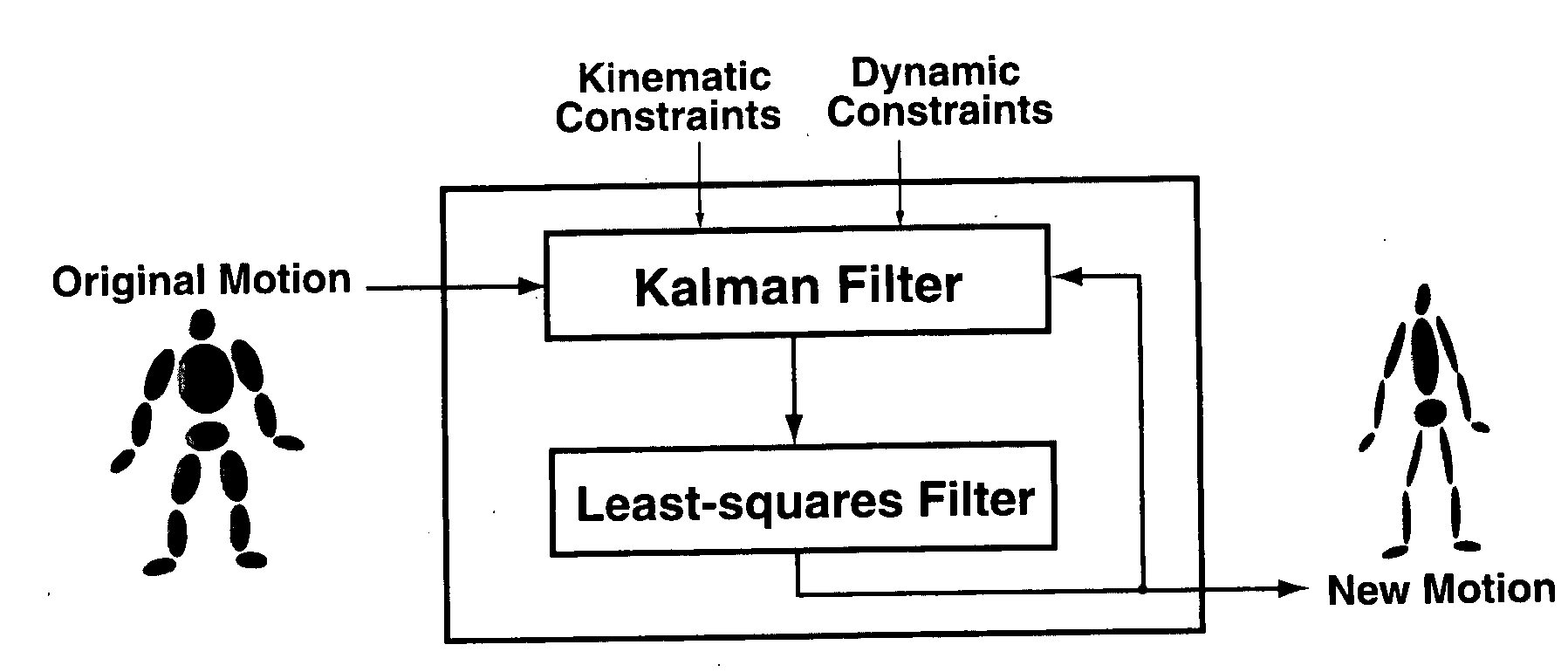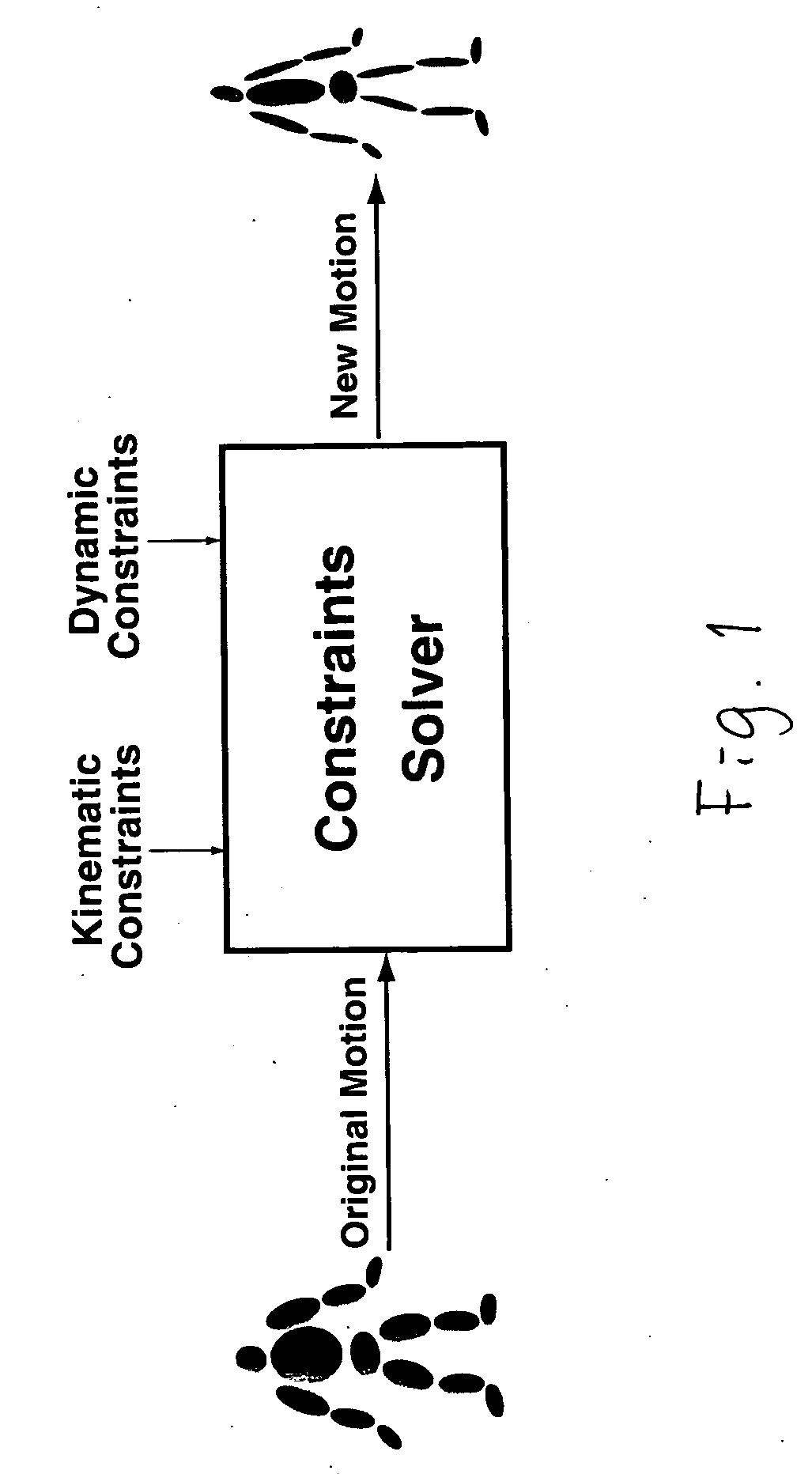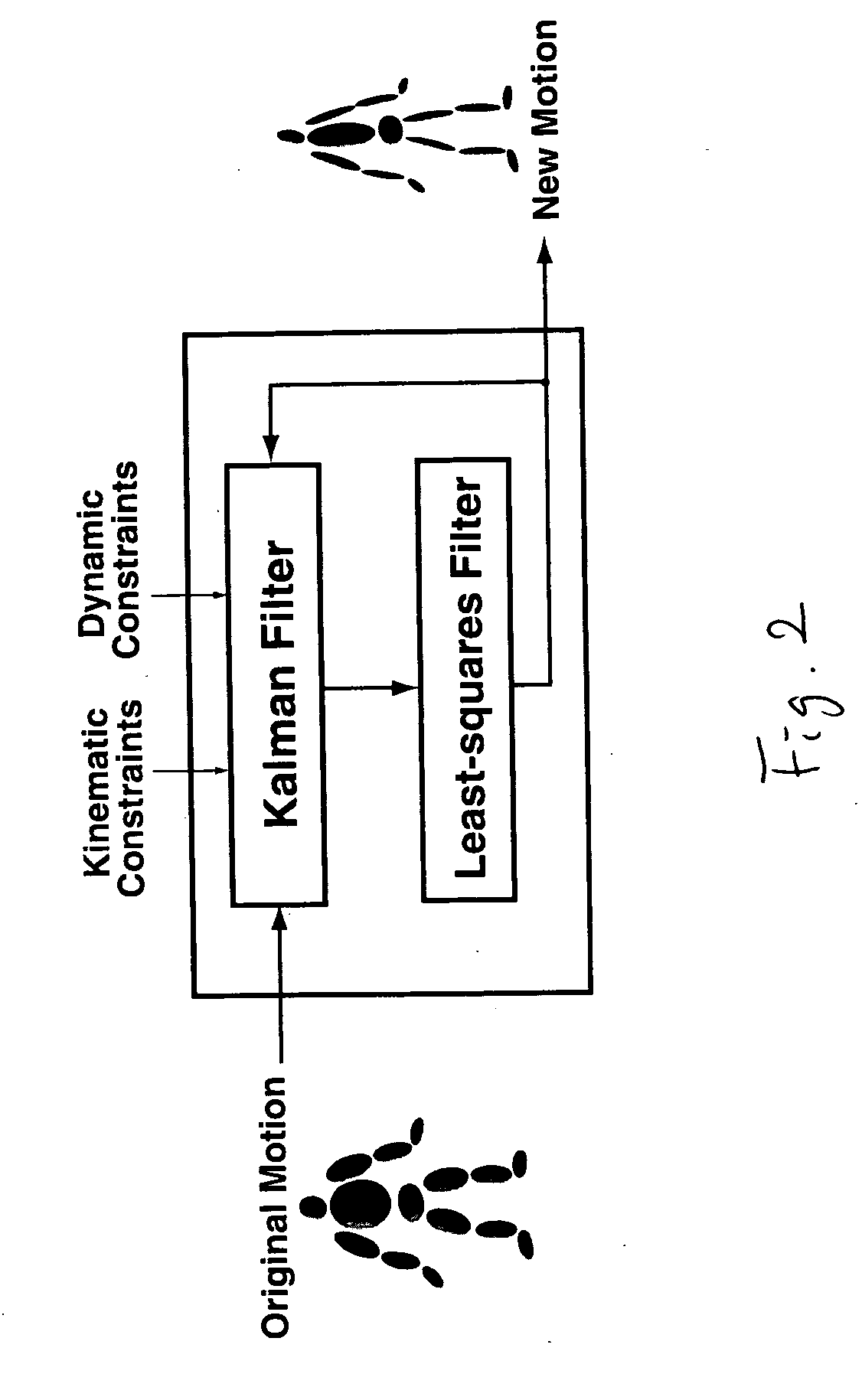Physically based motion retargeting filter
a physical-based motion and motion retargeting technology, applied in the field of character editing, can solve the problems that the kicking motion of a professional soccer player cannot be reproduced by an unskilled person of equivalent anthropometric characteristics, and the constraints are highly nonlinear, and achieve the effect of stable interactive ra
- Summary
- Abstract
- Description
- Claims
- Application Information
AI Technical Summary
Benefits of technology
Problems solved by technology
Method used
Image
Examples
Embodiment Construction
[0054] The U.S. Provisional Patent Application Ser. No. 60 / 639,393 filed on Dec. 27, 2004 and the paper, ACM Transactions on Graphics, Volume 24, No. 1 (January 2005), pp. 98-117, by the applicants are incorporated by reference into this disclosure as if fully set forth herein.
3. Overview
[0055]FIG. 2 shows an outline of the overall structure of our motion editing process. Animators first provide the input motion of the source character along with a set of kinematic and dynamic constraints. Then a Kalman filter that is tailored to the motion editing problem produces the motion parameter values, which are post-processed by the least-squares curve fitting module. We apply the Kalman filter and least-squares filter repeatedly until it converges to an acceptable result. Several important issues must be addressed in the implementation of the process outlined above:
[0056] What kinds of constraints are needed to generate a desired motion? How should those constraints be formulated? Thes...
PUM
 Login to View More
Login to View More Abstract
Description
Claims
Application Information
 Login to View More
Login to View More - R&D
- Intellectual Property
- Life Sciences
- Materials
- Tech Scout
- Unparalleled Data Quality
- Higher Quality Content
- 60% Fewer Hallucinations
Browse by: Latest US Patents, China's latest patents, Technical Efficacy Thesaurus, Application Domain, Technology Topic, Popular Technical Reports.
© 2025 PatSnap. All rights reserved.Legal|Privacy policy|Modern Slavery Act Transparency Statement|Sitemap|About US| Contact US: help@patsnap.com



